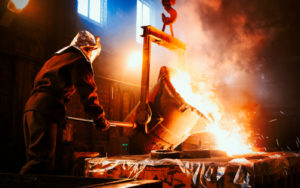
Casting Design Factors
It is a known fact that modern-day technologies allow obtaining castings with top surface finish. For instance, shot blasting is one such surface treatment technique achieved by exerting abrasive materials on a casting’s surface. This is used to remove flashing from a component or for improving its external aesthetics.
In fact, by collaborating with clients, die casting companies can ensure that the requirement for post-casting surface finishes might not even be required. As it is said in production management, it is best to “get it right the first time”, below are some factors that contribute to a casting’s initial surface and prevent wear and tear.
Placing of Parting Lines
A parting line is formed when two halves of a die cast meet. Consulting with original equipment manufacturer suppliers during the design stage of casting can assure parting line is placed properly or in accordance with required surface finish in die casting. The placing of parting line should be done in a way that the end product’s edges are not trimmed off or to eliminate the requirement for edge polishing on a casting.
Countersinks
This is to achieve the integrity of surface edge of tapped holes. Leading threads can be protected from polishing with countersinks or deburring with counterbores that are placed on die-cast holes in machining.
The Wall Thickness of Castings
Where required and feasible, the thickness of internal walls of a casting can be made on bosses for avoiding scuffing on encircling surface areas that are painted.
Ribs
The ribs that are well-designed enhance the die pour and prevent occurrence of sink marks on the surface of castings. Stocky and short bosses help in optimizing the flow of molten metal and can ensure the integrity of surface.
Radius
With the use of maximum permissible radius for both external and internal corners enhances filling molten metal into die cavity and makes it plausible for reaching all component’s surfaces with deburring equipment that are vibratory.
Housing the Corners of Die-Cast
An ideal design of materials used to tap corners of a die-cast component can also ensure filling molten metal into the die cavity flows smoothly.
Textured Surfaces
During the initial consultation with the supplier, textured surfaces that are cast-in can be made on select areas of a casting by designing a custom-made die.
